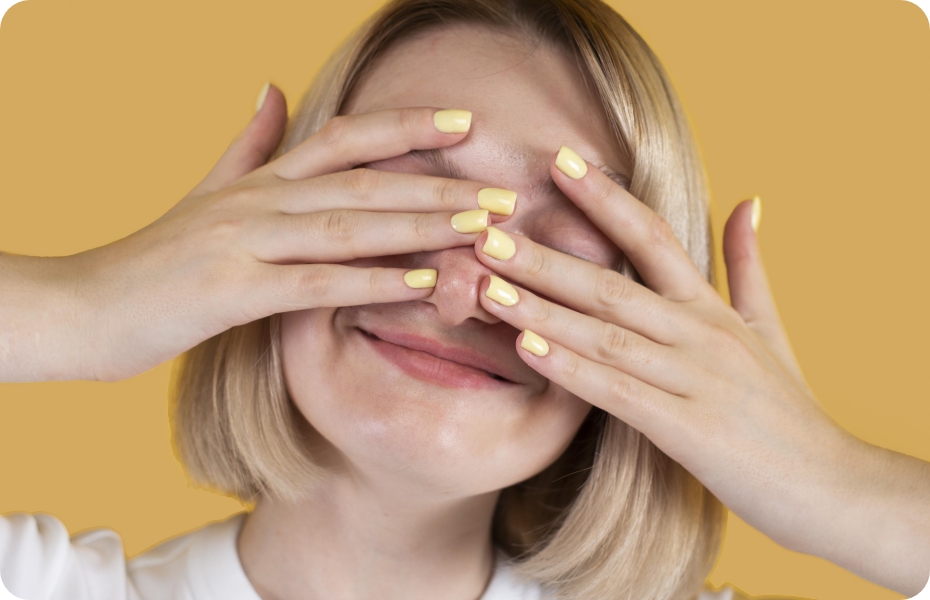Works for a company that specializes in Image Masking in Photoshop.
For professionals working with visual content, Photoshop is an indispensable tool, and one of its most powerful features is Image Masking. This technique allows editors to isolate specific parts of an image, making it a crucial skill for anyone looking to enhance their photo editing capabilities.

Whether you’re a seasoned graphic designer or an aspiring photo editor, understanding how to effectively use Image Masking in Photoshop can significantly improve your workflow and output quality.
Key Takeaways
- Understanding the basics of Image Masking in Photoshop
- Learning techniques for effective image isolation
- Enhancing your photo editing skills with advanced masking techniques
- Improving workflow efficiency with Photoshop’s masking tools
- Achieving professional-grade image editing results
What Is Image Masking and Why It Matters
Understanding image masking is crucial for anyone involved in photo editing, as it allows for precise control over image elements. Image masking is a technique used to separate an image into different parts, enabling editors to work on specific areas without affecting the rest of the image.
Definition and Basic Concepts
At its core, image masking involves creating a mask that determines which parts of an image are visible and which are not. This is achieved by using various masking techniques that can be applied using different tools and software, such as Adobe Photoshop. The basic concept revolves around isolating the subject or specific elements within an image to edit or manipulate them independently.
The Role of Masking in Professional Photo Editing
In professional image editing, masking plays a pivotal role. It allows editors to achieve complex edits with precision, such as removing backgrounds, isolating objects, and making intricate selections. Masking is essential for tasks that require a high level of detail and accuracy, making it an indispensable skill for professionals.
The following table illustrates the key differences between image masking and other editing techniques:
| Technique | Primary Use | Precision Level |
|---|---|---|
| Image Masking | Isolating objects, removing backgrounds | High |
| Layer Blending | Combining multiple images | Variable |
| Color Correction | Adjusting image colors | Medium |
When to Use Image Masking vs. Other Techniques
Knowing when to use masking techniques versus other editing methods is crucial. Image masking is ideal for situations where you need to isolate specific parts of an image with high precision. For instance, when editing product images for e-commerce, masking is used to remove backgrounds and highlight the product. In contrast, techniques like layer blending are better suited for combining multiple images or creating composite visuals.
In conclusion, image masking is a powerful tool in the arsenal of any professional image editor. Its ability to isolate and manipulate specific parts of an image with precision makes it indispensable for a wide range of applications, from e-commerce product photography to complex visual effects in advertising.
Essential Types of Image Masking Techniques
The art of image masking encompasses a range of techniques, each with its unique applications and benefits. Understanding these different methods is crucial for professionals looking to enhance their photo editing skills.
Layer Masks for Non-Destructive Editing
Layer masks are a fundamental tool in Photoshop, allowing editors to make non-destructive edits to their images. By using layer masks, professionals can hide or reveal parts of a layer without permanently altering the original image.
This technique is particularly useful for making subtle adjustments and achieving precise control over the editing process.
Clipping Masks and Their Applications
Clipping masks offer another versatile method for masking images. By clipping one layer to another, editors can create complex compositions and achieve unique visual effects.
This technique is especially useful in graphic design and advertising, where creative and intricate designs are often required.
Alpha Channel Masking for Complex Selections
For more complex selections, alpha channel masking proves to be an invaluable technique. It involves using the alpha channel to store selections, which can then be used to mask parts of an image.
This method is particularly effective for images with intricate details or fine edges, such as hair or fur.
Vector Masks for Scalable Projects
Vector masks provide a scalable solution for masking images, as they are resolution-independent. This makes them ideal for projects that require resizing or scaling, such as logos or icons.
Vector masks are also useful for creating crisp, sharp edges, which are essential in many professional applications.
Advanced Image Masking Tools in Photoshop
The art of image masking in Photoshop is elevated by its sophisticated tools, designed to handle even the most challenging tasks. By leveraging these advanced features, users can achieve precise and complex masking with ease.
Quick Selection Tool and Select and Mask Workspace
The Quick Selection Tool in Photoshop allows for rapid selections based on texture and color. When combined with the Select and Mask Workspace, users can refine their selections, making it particularly useful for complex images.
Pen Tool Techniques for Precise Masking
The Pen Tool remains one of the most powerful methods for creating precise masks. Its ability to draw paths around objects makes it ideal for detailed work.
Tips for using the Pen Tool effectively include:
- Zooming in on the subject for more accurate path creation
- Using the Convert Point Tool to adjust path segments
Color Range and Focus Area Selection Methods
Photoshop’s Color Range selection allows users to isolate specific colors within an image, making it easier to mask objects based on their color properties.
Refine Edge and Refine Mask Features
The Refine Edge and Refine Mask features enable users to fine-tune their masks, adjusting edge detection and mask refinement for more natural results.
“The key to successful image masking lies in the details. Refining edges and masks can make all the difference in achieving a seamless composite.”
Mastering Complex Image Masking Scenarios
Complex image masking scenarios require a deep understanding of various techniques and tools. Mastering these challenges is crucial for professionals in the field of photo editing.
Hair and Fur Extraction Techniques
Extracting hair or fur from images is one of the most challenging tasks in image masking. Techniques such as alpha channel masking are particularly useful for achieving precise selections.
Using the right tools, such as the Select and Mask workspace in Photoshop, can significantly simplify this process. This tool allows for detailed refinement of edges, making it ideal for complex subjects like hair.
Transparent and Translucent Object Masking
Masking transparent or translucent objects requires a different approach, often involving the use of layer masks and careful adjustment of mask properties.
Handling Shadows and Reflections
Shadows and reflections add depth to images but can complicate the masking process. Understanding how to preserve natural lighting effects and create realistic drop shadows is essential.
Preserving Natural Lighting Effects
To maintain the natural look of an image, it’s crucial to preserve the original lighting effects. This involves careful masking that takes into account the lighting and shading of the subject.
Creating Realistic Drop Shadows
Drop shadows can enhance the realism of an image. Techniques for creating realistic drop shadows include using layer styles and manual painting with soft brushes.
Here’s a comparison of different masking techniques for complex scenarios:
| Technique | Application | Complexity |
|---|---|---|
| Alpha Channel Masking | Hair and Fur Extraction | High |
| Layer Masking | Transparent/Translucent Objects | Medium |
| Shadow and Reflection Handling | Preserving Lighting Effects | High |
By mastering these complex image masking scenarios, professionals can significantly enhance their image editing capabilities, producing high-quality results that meet client expectations.
Commercial Applications of Professional Image Masking
The use of advanced image masking techniques is transforming the way businesses present their products and services. Professional image masking has numerous commercial applications across various industries, enhancing visual content and driving engagement.
E-commerce Product Photography Enhancement
In e-commerce, high-quality product images are crucial. Image masking helps remove backgrounds, isolate products, and create clean, professional-looking images that stand out in online catalogs and advertisements. This technique is particularly useful for product photography where the background needs to be changed or removed to fit different marketing contexts.
Advertising and Marketing Materials
Effective advertising relies heavily on compelling visuals. Image masking enables marketers to create complex compositions by isolating objects from their original backgrounds and placing them in new contexts. This is particularly useful for creating eye-catching advertisements and promotional materials that capture the audience’s attention.
Real Estate and Architectural Image Editing
In real estate and architectural visualization, image masking is used to enhance property images, remove unwanted objects, and create virtual staging. This helps potential buyers visualize the property’s potential and can significantly impact marketing efforts.
Fashion and Portrait Retouching
Fashion and portrait photography often require extensive retouching. Image masking techniques are used to isolate subjects from their backgrounds, allowing for precise retouching and enhancement of the subject’s features. This results in polished, high-quality images that are ideal for editorial spreads, advertising campaigns, and commercial promotions.
| Industry | Application of Image Masking | Benefits |
|---|---|---|
| E-commerce | Product photography enhancement | Professional-looking product images, increased customer engagement |
| Advertising | Creating complex compositions | Eye-catching advertisements, improved marketing effectiveness |
| Real Estate | Property image enhancement | Enhanced property visualization, improved marketing |
| Fashion | Portrait retouching | High-quality images, polished editorial and advertising content |
By leveraging professional image masking techniques, businesses across these industries can significantly enhance their visual content, improve marketing efforts, and ultimately drive sales and engagement.
Common Image Masking Challenges and Solutions
Despite its importance, image masking is not without its hurdles, including complex backgrounds and edge artifacts. Professionals in the field of image editing frequently encounter these challenges, which can significantly impact the quality of the final output.
Dealing with Complex Backgrounds
One of the most daunting tasks in image masking is isolating the subject from a complex background. Techniques such as using the Select and Mask workspace in Photoshop can greatly simplify this process. This tool allows for more precise selections by refining edges and handling intricate details.
For instance, when dealing with images that have subjects with fine details like hair or fur, using the Refine Edge Brush tool can help in making a more accurate selection.
Handling Color Bleed and Edge Artifacts
Color bleed and edge artifacts are common issues that arise during image masking. To mitigate these problems, it’s essential to use techniques like feathering and adjusting the contrast of the mask. This helps in creating a more natural blend between the masked subject and the new background.
- Use the Refine Edge feature to adjust the edge detection and improve the overall quality of the mask.
- Apply a slight feather to the mask to soften the edges and reduce noticeable artifacts.
Batch Processing for Multiple Images
When dealing with multiple images that require similar masking, batch processing can be a significant time-saver. Photoshop’s Actions panel allows users to record a masking process that can then be applied to other images, streamlining the workflow.
For example, if you have a series of product images with similar backgrounds, you can record the masking process for one image and then apply it to the rest, making adjustments as needed.
Troubleshooting Common Masking Problems
Even with the best techniques, issues can arise. Common problems include halos around the masked subject or the background showing through. To address these, it’s crucial to inspect the mask closely and make adjustments to the edge refinement and contrast as needed.

By understanding and applying these solutions to common image masking challenges, professionals can significantly enhance the quality of their image editing work. Whether dealing with complex backgrounds, edge artifacts, or batch processing, having the right techniques and tools at your disposal is key to achieving professional results.
Our Professional Image Masking Services
Our team of experts excels in delivering high-quality image masking services, ensuring precision and perfection in every project we undertake. With a deep understanding of the intricacies involved in image editing, particularly in Photoshop, we are equipped to handle even the most complex masking tasks.
Specialized Expertise and Capabilities
Our team comprises skilled professionals with extensive experience in image masking. We utilize advanced techniques and tools within Photoshop to achieve flawless results. Our capabilities include:
- Precision masking for complex images
- Advanced techniques for hair and fur extraction
- Handling transparent and translucent objects with ease
Our Image Masking Process and Quality Standards
We follow a meticulous process to ensure the highest quality in our image masking services. This includes:
- Detailed analysis of the image to determine the best masking approach
- Utilization of advanced tools in Photoshop for precise masking
- Quality check to ensure the masked image meets our high standards
As noted by a satisfied client, “The image masking services provided were exceptional, with a level of detail that exceeded our expectations.” This feedback underscores our commitment to quality and customer satisfaction.
“The level of detail and precision in the image masking services we received was outstanding, significantly enhancing the quality of our product images.”
Turnaround Times and Service Levels
We understand the importance of timely delivery. Our standard turnaround times are designed to meet the needs of our clients without compromising on quality. We offer flexible service levels to accommodate urgent projects.
| Service Level | Turnaround Time |
|---|---|
| Standard | 24-48 hours |
| Express | 6-12 hours |
| Premium | 3-6 hours |
Client Success Stories and Case Studies
Our image masking services have helped numerous clients achieve their visual goals. From e-commerce product photography to advertising materials, our services have been instrumental in enhancing the visual appeal of various projects. We have worked with clients across different industries, delivering high-quality masked images that have contributed to their marketing and branding efforts.
For instance, one of our clients in the e-commerce sector saw a significant improvement in their product image quality after utilizing our image masking services. The precise masking of their products against complex backgrounds helped in presenting their offerings in a more appealing manner, thereby enhancing their brand image.
Latest Trends and Innovations in Image Masking
The latest trends in image masking are transforming the photo editing landscape. As technology advances, new techniques and tools are emerging, making the process more efficient and precise.
AI-Assisted Masking Technologies are at the forefront of innovation. AI algorithms can now assist in creating complex masks with minimal human intervention, significantly reducing the time required for intricate selections.
AI in Masking
AI-assisted masking uses machine learning to identify and isolate objects within an image. This technology is particularly useful for complex images with fine details, such as hair or fur.
Benefits of AI-Assisted Masking include increased speed and accuracy. AI can handle repetitive tasks, freeing up professionals to focus on creative aspects.
New Tools in Photoshop 2023
The latest version of Photoshop has introduced several new tools that enhance the masking process. These include improved selection tools and more intuitive masking options.
- Enhanced Quick Selection Tool
- Advanced Refine Edge Options
- Improved Masking Brush
These tools make it easier to achieve precise masks, even in challenging images.
Industry Best Practices and Standards
As image masking technology evolves, so do the best practices. Professionals are now adopting more sophisticated techniques, such as using AI for initial selections and refining them manually.
“The integration of AI in image masking has revolutionized our workflow, allowing us to focus on the creative aspects of photo editing.” – Industry Expert
Future Directions in Photo Editing Technology
The future of image masking looks promising, with ongoing advancements in AI and machine learning. We can expect even more sophisticated tools that will further streamline the photo editing process.

As these technologies continue to develop, staying updated with the latest trends and innovations will be crucial for professionals in the field.
Conclusion: Elevating Your Visual Content with Expert Image Masking
Expert image masking is a crucial step in elevating your visual content, whether it’s for e-commerce, advertising, or real estate. By applying the masking techniques discussed, you can achieve professional-grade image editing that enhances the overall quality of your visuals.
Mastering image masking techniques, such as layer masks, clipping masks, and alpha channel masking, allows for precise control over image editing. This expertise is essential for handling complex scenarios like hair and fur extraction, transparent objects, and shadows.
For businesses and individuals seeking high-quality image editing, considering professional image masking services can be beneficial. These services can help you achieve the desired visual impact, ensuring your content stands out in a competitive market.
By leveraging expert image masking, you can significantly improve the aesthetic appeal and effectiveness of your visual content, driving better engagement and results.
FAQ
What is image masking in Photoshop?
What are the different types of image masking techniques?
How do I choose the right image masking technique for my project?
What are some common challenges faced during image masking?
How can I troubleshoot common masking problems?
What are the benefits of using professional image masking services?
How is AI-assisted masking technology changing the field of image masking?
What are the latest trends and innovations in image masking?
Can I apply image masking to different industries such as e-commerce, advertising, and real estate?



